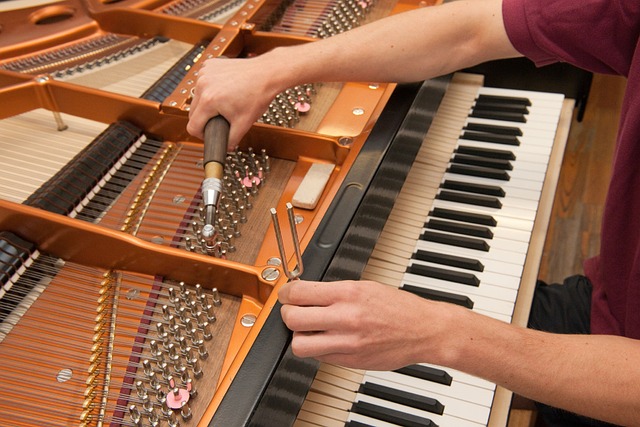After successfully moving your piano to a new location, it’s important to prioritize its maintenance to ensure longevity and optimal performance. Relocations can have an impact on the piano’s tuning stability, internal mechanisms, and even its physical condition. In this article, we will explore essential maintenance practices to undertake after a move. We will cover topics such as tuning, climate adjustments, and proper cleaning techniques. By following these practices, you can preserve the integrity of your piano, maintain its beautiful sound, and ensure its longevity.
Schedule a Professional Tuning:
Moving a piano can cause it to go out of tune due to the adjustments and vibrations it experiences during transportation. After the move, it is crucial to schedule a professional tuning. Professional piano technicians possess the expertise and tools to accurately tune your piano, bringing it back to its optimal pitch and ensuring harmonious sound production. Plan for a tuning appointment a few weeks after the move to allow the piano to settle into its new environment.
Climate Adjustment
Changes in temperature and humidity during a move can affect the piano’s wooden components, leading to issues like swelling, contracting, or cracking. It is essential to adjust the piano to its new climate. Follow these guidelines:
- Monitor Humidity: Use a hygrometer to measure the humidity levels in the room where the piano is placed. Aim for a relative humidity level between 40% and 50% to maintain stable conditions. Consider using a humidifier or dehumidifier, depending on the specific needs of your location, to regulate humidity levels as necessary.
- Avoid Extreme Conditions: Keep the piano away from areas with direct exposure to sunlight, heating vents, or drafts. Excessive heat or cold can damage the instrument’s structural integrity and affect its tuning stability.
Cleaning & Maintenance
Proper cleaning and maintenance play a vital role in preserving the piano’s appearance and performance. Follow these guidelines:
- Dusting: Regularly dust the piano’s exterior using a soft, lint-free cloth. Gently wipe the keys from left to right, being careful not to apply excessive pressure. Avoid using polishes or chemicals unless recommended by the piano manufacturer or a professional technician.
- Cleaning the Keys: To clean the piano keys, dampen a clean cloth with a mild soap and water solution. Wipe the keys carefully, ensuring they are not overly saturated. Dry the keys immediately afterward using a separate cloth.
- Avoiding Moisture: Keep liquids away from the piano to prevent accidental spills or moisture damage. If a spill occurs, immediately dry the affected area and consult a piano technician if necessary.
- Regular Professional Maintenance:
Schedule regular professional maintenance visits for your piano to ensure its overall health and performance. Professional technicians can inspect the piano’s internal components, including the action, strings, and soundboard, to identify and address any potential issues. They can also perform necessary adjustments, voicing, and regulation to optimize the piano’s touch and tone. Regular maintenance visits help prevent small problems from escalating into larger, costlier repairs.
Maintaining your piano after a move is crucial for its longevity and optimal performance. Following a successful relocation, prioritize professional tuning to restore the piano’s pitch and harmonious sound. Adjusting to the new climate and regulating humidity levels will protect the piano’s wooden components. Implement proper cleaning techniques to preserve its appearance, and schedule regular professional maintenance visits to ensure its overall health. By adhering to these essential maintenance practices, you can enjoy the beautiful sound and performance of your piano for years to come.

